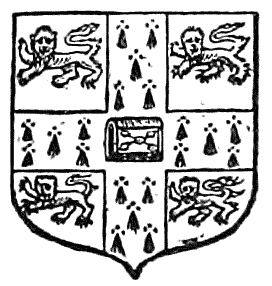
GROWTH AND FORM

“The reasonings about the wonderful and intricate operationsof nature are so full of uncertainty, that, as the Wise-man trulyobserves, hardly do we guess aright at the things that are uponearth, and with labour do we find the things that are before us.”Stephen Hales, Vegetable Staticks (1727), p. 318, 1738.
PREFATORY NOTE
Thisbook of mine has little need of preface, for indeed it is“all preface” from beginning to end. I have written it asan easy introduction to the study of organic Form, by methodswhich are the common-places of physical science, which are byno means novel in their application to natural history, but whichnevertheless naturalists are little accustomed to employ.
It is not the biologist with an inkling of mathematics, butthe skilled and learned mathematician who must ultimatelydeal with such problems as are merely sketched and adumbratedhere. I pretend to no mathematical skill, but I have made whatuse I could of what tools I had; I have dealt with simple cases,and the mathematical methods which I have introduced are ofthe easiest and simplest kind. Elementary as they are, my bookhas not been written without the help—the indispensable help—ofmany friends. Like Mr Pope translating Homer, when I feltmyself deficient I sought assistance! And the experience whichJohnson attributed to Pope has been mine also, that men oflearning did not refuse to help me.
My debts are many, and I will not try to proclaim them all:but I beg to record my particular obligations to Professor ClaxtonFidler, Sir George Greenhill, Sir Joseph Larmor, and ProfessorA. McKenzie; to a much younger but very helpful friend,Mr John Marshall, Scholar of Trinity; lastly, and (if I may sayso) most of all, to my colleague Professor William Peddie, whoseadvice has made many useful additions to my book and whosecriticism has spared me many a fault and blunder.
I am under obligations also to the authors and publishers ofmany books from which illustrations have been borrowed, andespecially to the following:―
To the Controller of H.M. Stationery Office, for leave toreproduce a number of figures, chiefly of Foraminifera and ofRadiolaria, from the Reports of the Challenger Expedition.{vi}
To the Council of the Royal Society of Edinburgh, and to that